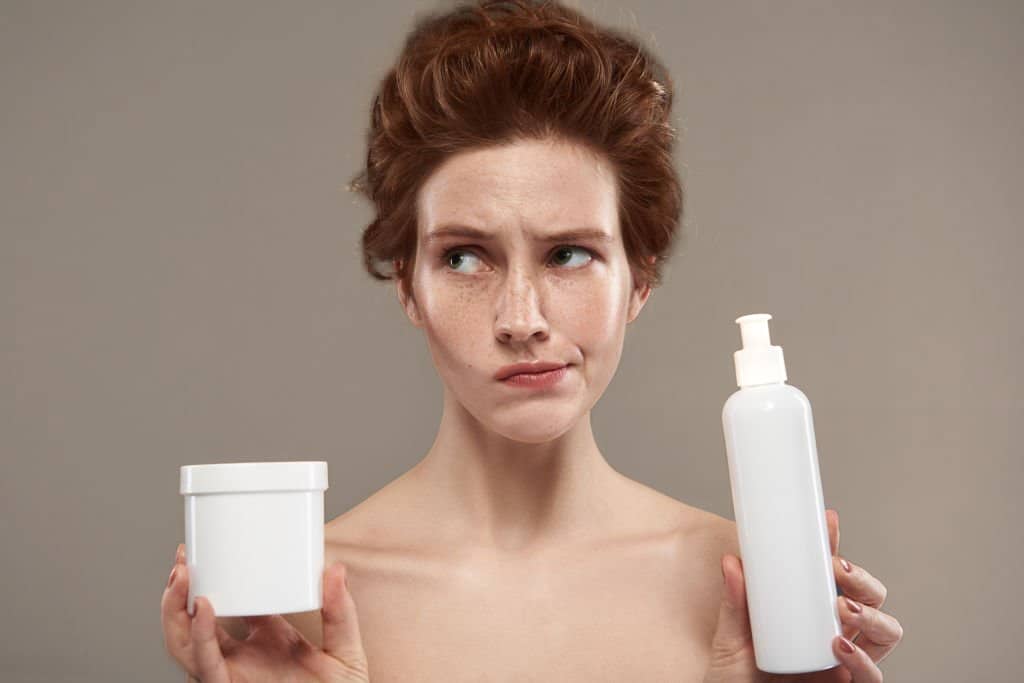When you flip over your skincare products to read the list of ingredients, it can feel like you’re trying to decipher an ancient language. But don’t worry, I’m here to help you crack the code. Here are some general rules to keep in mind:
1. Order Matters: Concentration Counts
When you glance at the ingredients list of your skincare product, you’re actually looking at a hierarchy organized by concentration. This is a crucial piece of information because it tells you which components will have the most significant effect on your skin. Typically, the first five to seven ingredients listed are the backbone of the product, comprising the lion’s share of the formula. This means that if hydration is your goal and you see hyaluronic acid listed among the top ingredients, you’re in luck. Conversely, if it’s near the end of the list, the product may not provide the moisture boost you’re seeking.
2. The 1% Rule
Beneath the surface of the primary ingredients lies the realm of components present in smaller doses, often not exceeding 1% of the total formula. This zone typically houses preservatives, fragrances, and colorants. Although they’re less concentrated, their impact shouldn’t be underestimated, especially for those with sensitive skin or allergies. These ingredients can be pivotal in determining the product’s sensory attributes and stability, but they can also be potential irritants.
3. Active Ingredients
The champions of your skincare products are the active ingredients, tasked with delivering targeted results. Whether your aim is to moisturize, exfoliate, or combat the signs of aging, these are the ingredients making it happen. They’re often spotlighted on the product’s packaging, with some brands even specifying their concentrations for transparency. This not only helps you understand the product’s potential efficacy but also allows you to compare it with others. For instance, if you’re exploring retinol products for anti-aging purposes, knowing the concentration can guide you to the most suitable option for your skin’s tolerance level.
4. Scientific Names
The use of INCI (International Nomenclature of Cosmetic Ingredients) names means that ingredients are often listed using scientific or Latin terms. This standardized naming convention ensures consistency across products and countries but can be baffling to the uninitiated. For example, seeing “Aqua” instead of water or “Tocopherol” instead of vitamin E might leave you scratching your head. However, a quick internet search can unveil the mysteries behind these names, empowering you with knowledge about what you’re applying to your skin.
To further empower your skincare journey, there are several invaluable online resources at your disposal for researching ingredient functions and safety profiles. Whether you encounter an unfamiliar ingredient or simply wish to deepen your knowledge, these databases offer a wealth of information:
- Paula’s Choice Skincare Ingredient Dictionary: A comprehensive resource that breaks down the role and benefits of a wide range of skincare ingredients, curated by skincare experts.
- EWG’s Skin Deep® Database: Provides safety ratings for ingredients and products, focusing on potential health concerns, which is especially useful for those with sensitive skin or looking for clean beauty products.
- CosDNA: A great tool for analyzing the comedogenicity and irritancy of cosmetic ingredients, helping you understand which products are likely to cause acne or irritate sensitive skin.
- INCI Decoder: Decodes ingredient lists into understandable terms and explains what each ingredient does in the formula, making it easier to assess product effectiveness and suitability for your skin type.
- BeautyPedia: Offers reviews and ingredient analysis of skincare and makeup products, helping you make informed decisions based on ingredient efficacy and product performance.
Each of these resources serves as a guide to help you navigate the vast world of skincare ingredients, ensuring you can select products that align with your skincare goals and concerns. Remember, armed with knowledge and the right tools, you can decode any ingredient list and tailor your skincare routine to your unique needs.
5. Watch Out for ‘Hidden’ Ingredients
It’s crucial to be aware of ‘hidden’ ingredients, especially if you’re avoiding specific ones due to allergies, sensitivities, or personal preferences. Here are some ingredients and their common aliases to watch out for:
- Parabens: Used as preservatives, parabens can be listed under names like methylparaben, propylparaben, butylparaben, and ethylparaben. Those looking to avoid parabens should look for these prefixes.
- Fragrances: Fragrance ingredients can hide under terms like “parfum,” “fragrance,” or even “aroma.” Due to proprietary laws, companies aren’t required to disclose the exact composition, which can be problematic for sensitive skin.
- Alcohols: Not all alcohols are drying or bad for the skin, but if you’re avoiding them, look beyond just “alcohol.” Names like isopropyl alcohol, denatured alcohol (alcohol denat.), ethyl alcohol, and methanol are ones to avoid for sensitive or dry skin. However, fatty alcohols like cetyl, stearyl, and cetearyl alcohol are generally considered beneficial for the skin.
- Chemical Sunscreens: If you’re sensitive to chemical sunscreens, watch out for ingredients like oxybenzone, avobenzone, octisalate, octocrylene, homosalate, and octinoxate. Mineral sunscreens with zinc oxide or titanium dioxide might be preferred alternatives.
- Phthalates: Often used to make fragrances last longer or to soften plastics, phthalates can be harder to spot. They might be listed as dibutyl phthalate (DBP), dimethyl phthalate (DMP), and diethyl phthalate (DEP), or hidden under “fragrance.”
- Formaldehyde Releasers: Preservatives that slowly release formaldehyde, a known carcinogen, to keep products germ-free. Look for DMDM hydantoin, imidazolidinyl urea, diazolidinyl urea, quaternium-15, bronopol (2-bromo-2-nitropropane-1,3-diol), 5-Bromo-5-nitro-1,3-dioxane, and hydroxymethylglycinate.
- Sulfates: Beyond the well-known sodium lauryl sulfate (SLS) and sodium laureth sulfate (SLES), sulfates can also appear as sodium lauryl sulfoacetate, sodium lauroyl isethionate, and sodium lauroyl taurate, among others. While not all sulfates are considered harmful, those with sensitive skin or concerns about irritation often choose sulfate-free options.
Understanding the ingredients in your skincare products is akin to holding a map while navigating a complex landscape. By keeping these guidelines in mind, you’re not just passively selecting products; you’re making informed choices that align with your skin’s needs and your beauty goals. So the next time you flip over a skincare product, remember these rules and take charge of your skincare journey with confidence.


Leave a Reply